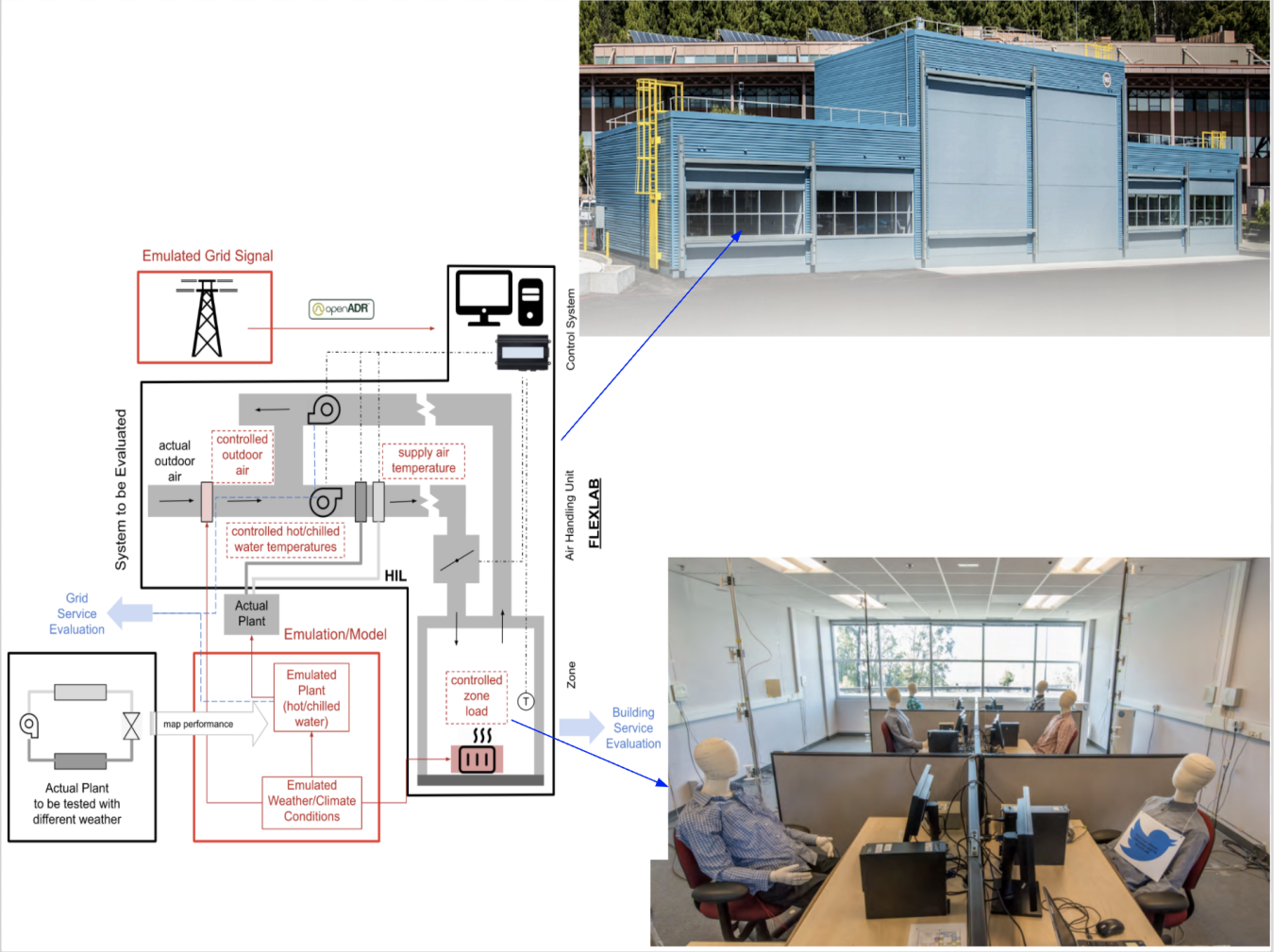Lead Performer: Lawrence Berkeley National Laboratory – Berkeley, CA
April 21, 2021
Lead Performer: Lawrence Berkeley National Laboratory – Berkeley, CA
Partners:
-- Southern California Edison – Rosemead, CA
-- MelRok, LLC – Santa Ana, CA
DOE Total Funding: $1,600,000
Cost Share: $400,000
Project Term: June 1, 2020 – November 30, 2022
Funding Type: BENEFIT 2019
Project Objective
This project will generate high fidelity building performance measurements, by combining the advanced testing capability of DOE FLEXLAB with cutting-edge modeling tools using a hardware-in-the-loop (HIL) approach. The research team will use FLEXLAB to physically test a variety of system configurations (HVAC, lighting, envelope, plugs) and controls and their impact on grid services as well as on visual and thermal comfort, in a real test room. The dataset, the test procedures and the simulation models will be publicly available as open-source material.
Project Impact
Availability of realistic and granular performance data for a variety of use cases (e.g., grid services, building mass) will be used to do the following:
- Benchmark the performance of real buildings
- Provide input parameters to large-scale building simulations
- Guide research roadmaps of grid-responsive technologies
The test procedures will permit other researchers to replicate these tests in other facilities.
The availability of a HIL setup and Modelica models of FLEXLAB will reduce cost for testing control algorithms that optimize energy and comfort.
Contacts
DOE Technology Manager: Harry Bergmann, harry.bergmann@ee.doe.gov
Lead Performer: Mary Ann Piette, Lawrence Berkeley National Laboratory
Co-PI: Marco Pritoni, Lawrence Berkeley National Laboratory

